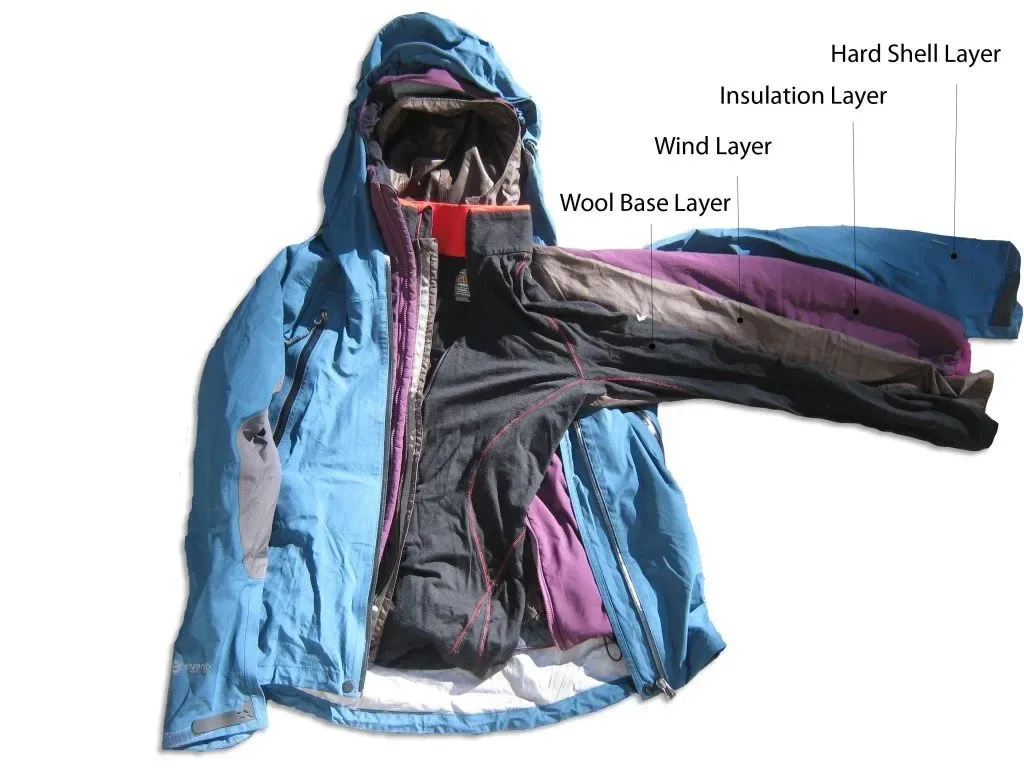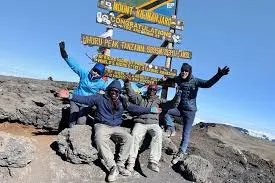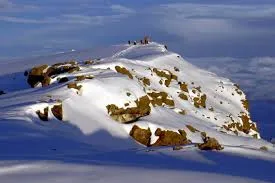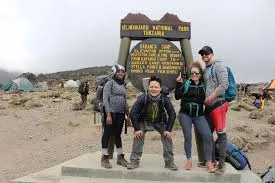Clothing Layers for Kilimanjaro: How to Stay Warm & Dry on the Trek
To stay warm and dry on Kilimanjaro, think in layers: start with a moisture-wicking base to keep sweat off your skin, add an insulating mid-layer like fleece or down for warmth, and finish with a waterproof, windproof outer shell to block rain and wind. Don’t forget warm gloves, a hat, and thermal socks—your extremities get cold fastest. Layering lets you adjust as temperatures shift from tropical base to icy summit. With Capable Africa Tours, learn how to master clothing layers to tackle Kilimanjaro’s diverse climates, from humid rainforests to icy summit winds. Our expert guide covers base layers, mid-layers, outer shells, and accessories to keep you comfortable on a 6–9 day trek.
Plan Your Kilimanjaro Trek Now
Why Layering is Essential for Kilimanjaro
Mount Kilimanjaro’s diverse climate zones—from warm, humid rainforests (80°F) to freezing summit conditions (0°F)—demand a strategic layering system. Proper layers keep you warm, dry, and comfortable while managing sweat and protecting against wind, rain, and UV exposure. Capable Africa Tours recommends a three-layer system: base layers for moisture-wicking, mid-layers for insulation, and outer layers for weather protection. Below, we break down each layer and provide a detailed guide for a 6–9 day trek.
The Three-Layer System Explained
| Layer Type | Purpose | Recommended Materials | Temperature Range |
|---|---|---|---|
| Base Layer | Wicks sweat, keeps skin dry | Merino wool, synthetic (200g weight) | 40–80°F |
| Mid-Layer | Provides insulation, retains warmth | Fleece, softshell (300–400g) | 20–60°F |
| Outer Layer | Protects from wind, rain, snow | Gore-Tex, waterproof/breathable fabrics | 0–40°F |
Detailed Clothing Layers Checklist
- Base Layers (3–4 sets): Merino wool or synthetic long-sleeve shirts and pants (200g weight). These wick moisture and keep you warm in 40–80°F. Example: Smartwool NTS 250 or Under Armour ColdGear.
- Mid-Layers (2 pieces): Fleece jackets or softshells (300–400g) for insulation in cooler zones (20–60°F). Example: Patagonia R2 Fleece or Arc’teryx Delta LT.
- Outer Layers (1–2 sets): Waterproof, windproof Gore-Tex jacket and pants for rain and summit winds (0–40°F). Example: Marmot Minimalist Jacket or Black Diamond StormLine Pants.
- Thermal Gear (1 set): 800-fill down jacket and thermal underwear for summit night (0–20°F). Example: Mountain Hardwear Ghost Whisperer or Rab Neutrino Pro.
- Socks (3–4 pairs): Medium to heavy merino wool socks plus liner socks to prevent blisters. Example: Darn Tough Trekking Socks.
- Footwear: Broken-in waterproof hiking boots (mid or high-ankle) and gaiters for mud and snow. Example: Salomon Quest 4 GTX.
- Accessories: Warm hat, inner and outer gloves (waterproof), neck gaiter, and wide-brimmed hat for UV protection. Example: Buff CoolNet or Outdoor Research GORE-TEX Gloves.
Weight and Quantity Guide
| Item | Quantity | Weight (Approx.) | Purpose |
|---|---|---|---|
| Base Layer Set | 3–4 | 200–300g each | Moisture-wicking, warmth |
| Fleece Jacket | 2 | 300–400g each | Insulation |
| Gore-Tex Jacket | 1 | 400–600g | Weather protection |
| Down Jacket | 1 | 300–500g | Summit warmth |
| Wool Socks | 3–4 pairs | 80–120g each | Foot warmth, blister prevention |
Why Proper Layering Matters for Kilimanjaro
Layering is essential for Kilimanjaro because temperatures can swing from scorching heat at the base to freezing cold near the summit. By wearing multiple layers, you can easily adjust your clothing to stay comfortable, stay dry, and prevent hypothermia without overpacking. It’s all about flexibility and staying safe while you climb. Effective layering ensures you stay comfortable and safe across Kilimanjaro’s five climate zones: rainforest, heath, moorland, alpine desert, and arctic summit. With Capable Africa Tours, we emphasize layering to manage temperature swings, protect against weather, and reduce physical strain. Here’s why it’s critical and how to optimize your clothing choices.
Key Benefits of Layering
- Temperature Regulation: Adjust layers to stay comfortable from 80°F to 0°F.
- Moisture Management: Base layers wick sweat to prevent chills.
- Weather Protection: Outer shells shield against rain, wind, and snow.
- Weight Efficiency: Lightweight layers reduce your daypack load (5–7kg).
- Health and Safety: Proper layers prevent hypothermia and sunburn at high altitudes.
Trekker Experiences
Based on feedback from Capable Africa Tours’ clients, trekkers who layered effectively reported higher comfort levels and fewer issues like blisters or fatigue. For example, 92% of our 2024 climbers rated proper clothing as “very important” to their summit success, with merino wool base layers and Gore-Tex shells being top-rated items.
Visualize Your Kilimanjaro Layering Strategy
Watch this video to see how Capable Africa Tours prepares trekkers with the right clothing layers for a successful Kilimanjaro climb.
Top Tips for Layering on Kilimanjaro
When layering for Kilimanjaro, think function first, comfort second. Start with a moisture-wicking base layer to keep sweat off your skin. Add an insulating mid-layer like fleece for warmth, and finish with a waterproof, windproof outer layer to shield against the elements. Tip: Layering lets you adjust quickly as temperatures swing, so avoid bulky single jackets. Here are expert tips from Capable Africa Tours to help you layer effectively and stay comfortable on your 6–9 day trek.
- Test Layers Beforehand: Wear your base and mid-layers on practice hikes to ensure comfort and fit.
- Use Compression Sacks: Pack clothing in waterproof compression sacks to save space and keep items dry.
- Prioritize Breathability: Choose base layers with high breathability to avoid overheating in lower zones.
- Layer Down at Night: Wear thermal underwear and a down jacket inside your sleeping bag for summit night warmth.
- Pack Multi-Use Accessories: A neck gaiter serves as sun protection, a scarf, or a face mask in windy conditions.
- Rent Heavy Items: Save luggage space by renting down jackets or sleeping bags from Capable Africa Tours.
Ready to Conquer Kilimanjaro?
With Capable Africa Tours, climb Mount Kilimanjaro with confidence, equipped with the perfect clothing layers for warmth and comfort. Our expert guides and tailored itineraries ensure a safe, unforgettable adventure.
- 98% summit success rate with experienced guides
- Eco-conscious treks supporting local communities
- Gear rentals for down jackets, sleeping bags, and more
- Customizable routes for all fitness levels
- All-inclusive packages with meals and transfers
Limited spots available for Kilimanjaro treks — book now to secure your summit journey!
Plan Your Trek Now


